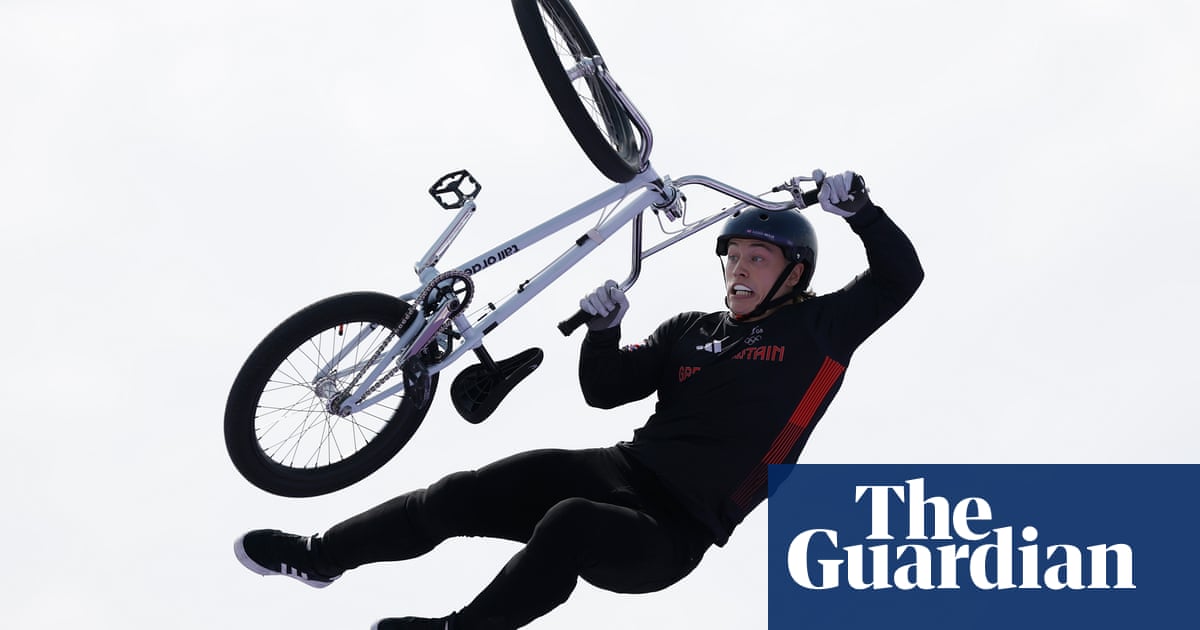It began with a Christmas present. A shiny new BMX bike and the kindling of a dream. Kieran Reilly was eight years old when he rocked up at Leam Lane skate park on Boxing Day, and as he gingerly navigated the ramps and banks, he could scarcely have known that he was embarking on a winding path that would take him from freezing Gateshead to the brutal heat of Paris, and an Olympic silver medal.
And of course there was a certain disappointment there too, after a spectacular, spine-tingling second run that everyone at La Concorde – including Reilly himself – reckoned would be enough to clinch the BMX freestyle gold. But the five judges disagreed, and by a margin of less than a point the gold went to an ecstatic Jose Torres Gil for Argentina’s first gold medal of the Games, with Anthony Jeanjean claiming bronze for the host nation.
Curiously, it turned out in the aftermath that British social media seemed to be harbouring hundreds of sudden BMX experts, all superciliously pointing out the many unforgivable judging errors that had denied Reilly his rightful gold. On French television, the squealing over Jeanjean’s bronze went even further, with the commentators declaring that he had been “robbed”.
The point to make is that BMX, unlike the more rigid technical criteria operated in other judged sports, is a sport assessed largely on vibes. There is no code of points, no compulsory element, and while the UCI tells judges what to reward – difficulty, originality, amplitude, risk, variety, individual style, use of the whole course – scores are based on overall “impression”. You may as well argue over the definition of art.
In any case, to quibble over decimal points here and there is really to miss the whole point of the extravaganza. For these athletes, who travel the world together, who inspire and push each other, who form close bonds through their shared experience, this is as much a celebration as a competition. The thrill is in the performance as much as the victory, the sheer visceral pleasure of pure flight, pure invention, of taking these two wheels and creating something nobody has ever done before.
Certainly there were no complaints from Reilly afterwards. “Whatever score I got, I was going to be happy with,” he said. “I thought it might have been enough for gold, but it wasn’t. But I’m just as happy. I’ve worked three years to get here. A lot of work comes down to one minute on that course. And I left everything out there.”
On one thing pretty much everyone could agree: this was the greatest freestyle competition ever seen. “Probably the best final that we’ve ever seen on the international stage,” said Jeanjean afterwards. “Compared to World Cups and continental events, this one blows them out of the water,” Reilly said. “You saw everyone went away and put in a lot of work to debut new and higher levels of riding. That’s what we saw.”
And there were few more flamboyant tricks than the 720 double tail-whip pulled off right at the end of Reilly’s run. Let’s break this down for beginners. You start with a 180-degree turn on the bike. Then you get off the bike and spin it around twice on its axis. Then you get back on the bike and spin the last 540 degrees, before landing perfectly on both wheels. Oh, and this is all happening about 20 feet in the air, in 35C heat, with the legs burning and the lungs screaming at you to stop.
And if you fall, you know about it. This was the fate that befell defending champion Logan Martin of Australia, who crashed out on his first run and unseated himself during his second. And so the key skill here is not just ability but audacity, not just creativity but courage, the capacity to convert fear into beauty. While Reilly was trying to perfect the world’s first triple flair two years ago he crashed about 30 times, and had the scars to prove it.
For all this, freestyle is a sport advancing at a lightning pace, where the only real barriers are the imagination. Torres has his own 720, a double backflip in which he turns upside down and somehow seems to spin the bike on the end of his finger like a pizza. Jeanjean’s frankly ridiculous reverse 720 transfer – a double backflip while jumping from one ramp to another – was perhaps the trick of the day, a frankly disdainful two-fingers to Isaac Newton that brought Paris to its feet.
As for Reilly, who had to leave the north-east for Corby because of the lack of facilities, there are bigger fish to fry. “Coming from Newcastle, there’s not much up there for BMX,” he lamented. “I had to move away, which is not something I wanted to do. I’d love the kids in Newcastle to see what happened today and pick up a BMX bike.” Like the eight-year-old kid opening his presents on Christmas morning, and taking the first steps on a magical journey.









